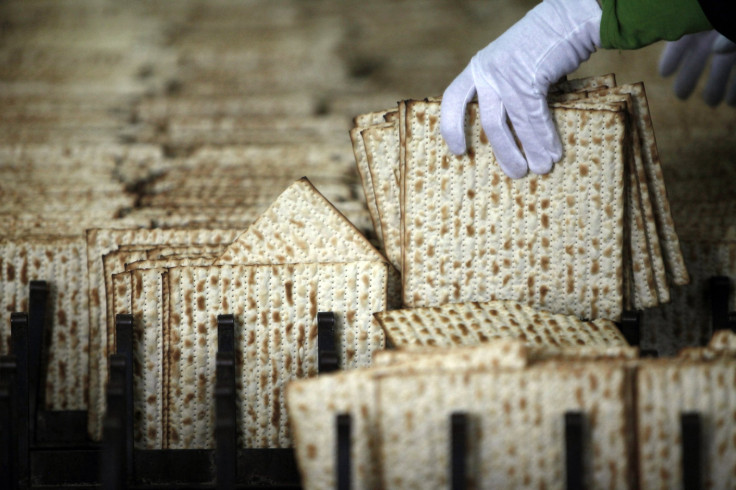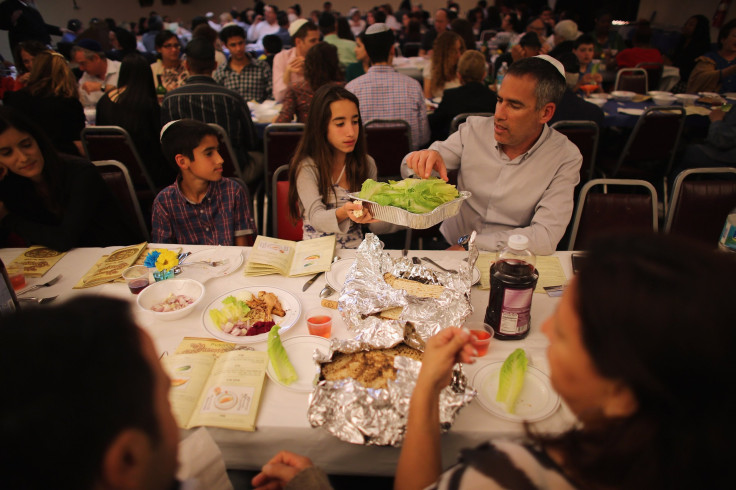What Is Passover 2016? Everything To Know About Jewish Holiday Celebrating Freedom From Slavery

“Chag sameah!”
If you’re planning to attend a Passover Seder this week, get used to hearing that one. It means “joyous festival” — an apt greeting during the Jewish holiday that celebrates the ancient peoples' freedom from bondage in Egypt. The weeklong holiday begins Friday evening and ends Saturday, April 30, at sunset. It’s one of the most significant — and also one of the most observed — holidays on the Jewish calendar.
What’s the Passover story? In brief, God sent Moses to warn the Egyptian pharaoh to let the Israelites go free, following generations of slavery. Pharaoh, predictably, refused Moses’ appeal, setting the stage for a series of plagues that would descend upon and punish the Egyptians. Streams were turned to blood; frogs swarmed over Egypt; pests infested the land; wild animals brought destruction, and more. After each plague, there was another warning. The tenth was the worst of all: All Egyptian first-born sons were killed.
Finally, the pharaoh gave in and let the Hebrews leave. In haste, they packed their belongings, hardly with enough time to prepare their food and set off together. But pharaoh changed his mind and ordered his army to chase after the fleeing Israelites. As they closed in, the Israelites hit a river (later identified with the Red Sea), prompting a panic. Moses was told by God to lift his staff, causing the sea to split and allowing them to pass. The Egyptians who chased after drowned in their wake.
How does Passover get its name? In Hebrew, the word for the holiday is “Pesach,” which literally translates as “passed over.” Before God struck the Egyptian first-borns with death, the Hebrews were ordered to mark the doorposts of their homes with the blood of a slaughtered lamb.
“The blood will be a sign for you on the houses where you are, and when I see the blood, I will pass over you. No destructive plague will touch you when I strike Egypt,” the Torah says.

What is a Seder? “Seder” literally means “order” in Hebrew. Usually Passover seders are held the first two nights of the holiday, so Friday and Saturday evening this year, and include a traditional meal. Those at the Seder — usually family and friends — read from a book called the Haggadah, which tells parts of the Passover story and includes songs and passages from the Bible.
A Seder plate is set in the middle of the table, which includes various foods that symbolize parts of the Exodus story. For example, salt water represents the tears and sweat of enslavement. Each part of the Seder plate relates to part of the story, at which point those in attendance drink or eat that food.
It is considered a commandment to drink wine and eat matzo during the Seder. Matzo ball soup is also a favorite.
What is matzo? As the Israelites were preparing to leave Egypt following the tenth plague, they rushed out with little time to bake their bread. They were instead left with unleavened bread — basically sheets of thin cracker. To symbolize this, Jews during the week of Passover generally refrain from eating any food with yeast in it, instead opting for matzo.
Adults in the family hide a piece of matzo for children to find following the Seder. Whoever manages to find the “afikomen,” as it’s called, is rewarded with money or sweets.
© Copyright IBTimes 2024. All rights reserved.






















